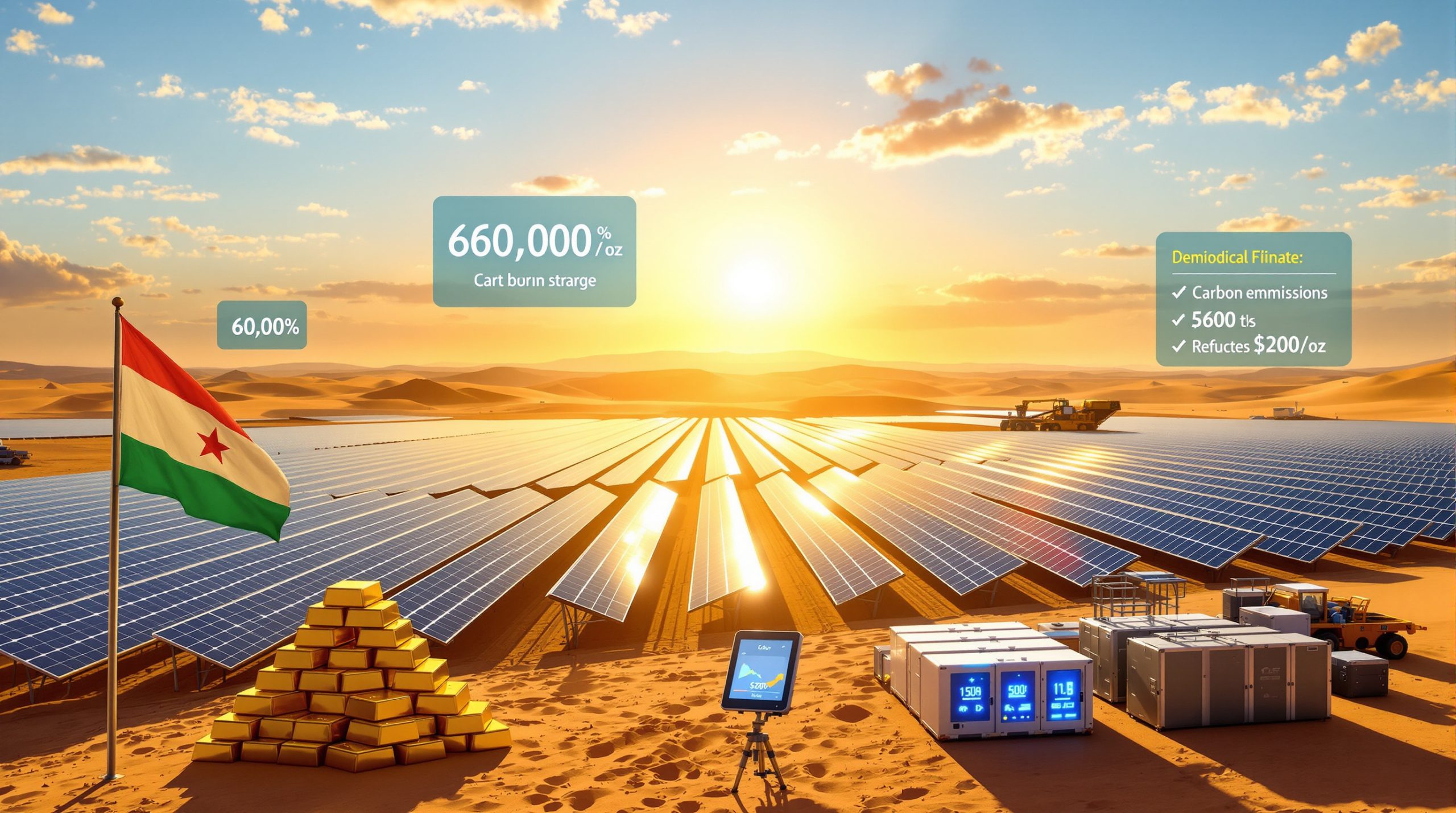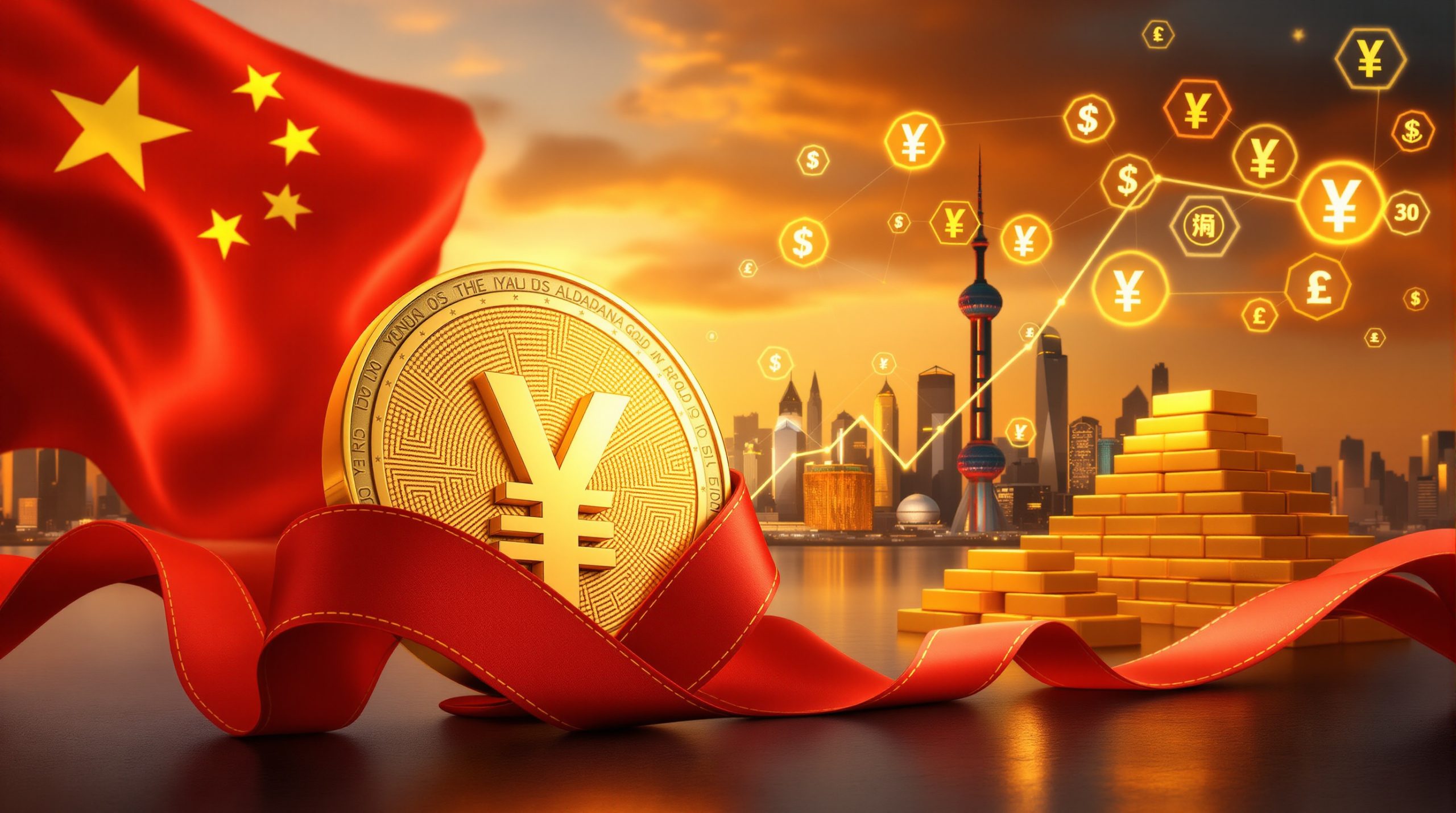China's New Lithium Export Controls: Global Market Implications
China's Ministry of Commerce and General Administration of Customs announced significant export controls on lithium-related products, effective November 8, 2025. These controls require exporters to obtain special licenses before shipping advanced lithium materials, high-performance batteries, and related manufacturing technologies abroad. The measures represent Beijing's strategic move to tighten its grip on the global battery supply chain amid ongoing geopolitical tensions and competitive dynamics in clean energy markets.
The announcement, made on October 9, 2025, signals China's intent to leverage its dominant position in the lithium supply chain while protecting its technological advantages in advanced battery development.
Key Products Subject to Export Licensing
The new export controls specifically target high-value segments of the battery supply chain, including:
- High-performance lithium-ion batteries (particularly those with energy densities ≥300 Wh/kg)
- Advanced cathode materials including lithium iron phosphate (LFP) with capacity ≥156 mAh/g and compaction density ≥2.5 g/cm³
- Nickel-cobalt-manganese (NCM) hydroxide precursors
- Nickel-cobalt-aluminum (NCA) hydroxide precursors
- Battery manufacturing equipment including roller kilns, mixers, and heat presses
- Production technologies related to next-generation battery development
These targeted controls are strategically designed to affect next-generation battery technologies rather than mainstream products currently in mass production. According to senior market analysts, the measures primarily target semi-solid-state and all-solid-state batteries, while leaving current mainstream NCM (230-280 Wh/kg) and LFP (160-210 Wh/kg) batteries for EV and energy storage applications largely unaffected.
Documentation and Enforcement Mechanisms
Under the new regulations, exporters face significant compliance requirements:
- All controlled goods must be clearly marked as "dual-use items"
- Products claimed as "not a controlled item" must include technical justification
- Chinese customs authorities can halt shipments pending review if declarations are incomplete or inaccurate
This creates a substantial documentation burden that could slow transactions and increase compliance costs even for non-controlled items.
Why Is China Implementing These Controls Now?
Strategic Timing and Market Position
The timing of these export controls coincides with China's dominant position in the global lithium supply chain, where it currently accounts for approximately 77% of worldwide lithium-ion battery production capacity. This market dominance gives China unprecedented leverage in shaping global supply chains.
The announcement comes during a period of lithium market oversupply and price depression, potentially allowing China to exert greater influence over future price trends and technology transfer while protecting its competitive advantages in advanced battery technologies.
Geopolitical and Economic Motivations
China's strategic move reflects multiple overlapping objectives:
- Technology Protection: Preventing unauthorized transfer of advanced battery technologies, particularly next-generation solid-state and semi-solid-state batteries
- Response to Western Policies: Countering measures like the US One Big Beautiful Bill (OBBB) Act championed by the Trump administration that aims to reduce dependence on Chinese battery materials
- Dual-Use Concerns: Limiting military applications of advanced battery technologies
- Market Leverage: Maintaining competitive advantage in the global energy transition
Industry experts note that the export controls do not constitute an outright ban but rather implement a stricter approval process. This nuanced approach allows China to maintain flexibility while establishing a framework for potentially more restrictive measures in the future if geopolitical tensions escalate.
How Will These Controls Affect Global Lithium Markets?
Short-Term Market Impacts
The lithium market has already experienced significant price volatility, with battery-grade lithium carbonate prices falling dramatically since late 2022. According to Fastmarkets data, lithium carbonate 99.5% Li2CO3 (battery grade) prices in China dropped to 72,500-73,000 yuan ($10,163-10,233) per tonne in October 2025, down from 590,000-605,000 yuan per tonne in November 2022 – representing an approximately 87.7% decline.
The new export controls could create additional short-term market uncertainty through:
- Disrupted supply chains for Western battery manufacturers
- Delayed technology transfer to emerging battery production facilities outside China
- Potential price premiums for advanced materials that become harder to source
- Increased GFEX futures market volatility as traders adjust to new regulatory realities
Immediate market reactions were visible following the announcement, with lithium carbonate futures on the Guangzhou Futures Exchange (GFEX) dropping 1.3% to 72,740 yuan per tonne on October 10, 2025.
Supply Chain Reorganization
Companies dependent on Chinese lithium materials and technologies will need to implement comprehensive strategic responses:
- License Application Processes: Secure export licenses for continued access to Chinese materials
- Alternative Sourcing: Accelerate development of non-Chinese supply chains
- Production Adjustments: Potentially modify production schedules and technology roadmaps
- Partnership Reevaluation: Reconsider joint ventures and technology-sharing agreements with Chinese partners
The export controls may particularly impact smaller Western companies seeking technology-sharing agreements with Chinese partners, while major Chinese manufacturers with established plans for overseas expansion may face less disruption, according to market sources interviewed by Fastmarkets.
What Does This Mean for Battery Manufacturers Outside China?
Challenges for Western Battery Production
The export controls create significant hurdles for battery manufacturers in Europe, North America, and other regions trying to establish domestic production capacity:
- Technology Access Barriers: Reduced ability to import advanced cathode materials and production equipment
- Development Delays: Slower ramp-up of new battery-grade lithium refinery facilities outside China
- Competitive Disadvantage: Potential lag in accessing next-generation battery technologies
- Documentation Burden: New requirements to mark goods as "dual-use items" or provide technical justification for non-controlled status
These challenges come at a critical time when Western nations are investing heavily in establishing domestic battery manufacturing capacity to support electric vehicle production goals and energy transition plans.
Strategic Responses from Global Manufacturers
Battery manufacturers and automotive companies are likely to respond with multifaceted strategies:
- Diversification Initiatives: Accelerating partnerships with non-Chinese material suppliers in Australia, Chile, Argentina lithium brines, and emerging producers
- Technology Development: Increasing R&D investment in proprietary battery technologies
- Supply Security Measures: Building inventory buffers of critical materials
- Policy Advocacy: Pushing for government support to develop domestic alternatives
Companies with existing joint ventures or technology-sharing agreements with Chinese partners face particular uncertainty about how the controls will affect their operations, potentially requiring restructuring of these arrangements.
How Does This Affect China's Domestic Lithium Supply?
Domestic Project Developments
While implementing export controls, China is simultaneously managing its domestic lithium supply picture, with several key developments affecting market sentiment:
CATL's Jianxiawo Project
Market speculation about the restart of this major lepidolite project in Jiangxi province has created significant volatility. Local media reported on September 9, 2025, that CATL's mining permit application was progressing faster than anticipated, with production expected to resume "very soon." Some reports have suggested mining could resume as early as October 2025, though CATL has not officially confirmed these timelines.
The uncertainty surrounding this major project has directly influenced market prices, with spodumene values declining to $810-840 per tonne on October 10, 2025, down from recent highs of $1,000-1,055 per tonne in August.
Zangge Mining's Salt Lake Operations
This company received a new mining permit (valid August 10, 2025, to December 1, 2029) for its Qarhan salt lake in Qinghai province after operations were halted in July. The permit covers extraction of potassium salt, rock salt, magnesium salt, lithium ore, and boron ore.
Despite receiving the permit, industry sources indicate that lithium mining operations have not yet resumed, creating additional market uncertainty.
Additional Lepidolite Projects
Seven lepidolite mines across China are reportedly seeking mining approvals, potentially adding to domestic supply. The uncertain timing of these approvals has contributed to market volatility, with traders attempting to anticipate potential supply increases.
Impact on Domestic Prices
The combination of export controls and potential increased domestic production has created mixed price signals in China's lithium market:
- Lithium carbonate futures on the Guangzhou Futures Exchange (GFEX) dropped 1.3% to 72,740 yuan per tonne on October 10, 2025
- Spot prices for battery-grade lithium carbonate in China declined to 72,500-73,000 yuan per tonne, down from 72,600-73,500 yuan per tonne the previous day
- Spodumene prices (minimum 6% Li2O, CIF China) fell to $810-840 per tonne, down from August highs of $1,000-1,055 per tonne
This price weakness reflects ongoing market oversupply despite the export control announcement, suggesting that domestic production increases could potentially offset any tightening effect from the new regulations.
What Are the Long-Term Implications for Global Energy Transition?
Strategic Mineral Competition
China's new lithium export controls represent part of a broader pattern of strategic control over critical minerals essential to the energy transition. The measures reinforce China's multifaceted approach to resource dominance:
- Supply Chain Dominance: Reinforcing China's position across the entire battery value chain
- Innovation Leadership: Maintaining technological advantage in next-generation battery development
- Market Influence: Ability to affect global pricing and availability of critical materials
- Geopolitical Leverage: Using resource control as a diplomatic and economic tool
These controls reflect a recognition that advanced battery technology represents a critical competitive advantage in the global race for clean energy leadership.
Acceleration of Alternative Development
The restrictions may ultimately accelerate global efforts to develop alternative supply chains outside of China's sphere of influence:
- Regional Battery Hubs: Increased investment in battery production clusters in North America, Europe, and India's lithium strategy
- Alternative Chemistry Research: Greater focus on sodium-ion, zinc-based, and other battery technologies less dependent on lithium
- Recycling Infrastructure: Accelerated development of battery recycling capacity to reduce primary material dependence
- Mining Investment: Increased capital allocation to Australian lithium innovations and projects in Chile, Argentina, and emerging producers
These diversification efforts will likely require significant government support and long-term investment horizons, as building competitive alternatives to China's established supply chain will not happen quickly.
How Should Companies Navigate This New Regulatory Environment?
Compliance Strategies
Companies involved in the lithium supply chain should develop clear strategies for navigating the new export control regime:
- License Application Protocols: Establish efficient processes for securing necessary export licenses
- Documentation Systems: Implement proper marking and classification of controlled vs. non-controlled items
- Supply Chain Mapping: Conduct comprehensive audits of material sources and technology dependencies
- Risk Assessment: Evaluate vulnerability to future regulatory changes
Companies should pay particular attention to the technical specifications that determine whether products fall under controlled categories, such as energy density thresholds for batteries and performance specifications for cathode materials.
Diversification Approaches
To reduce dependency on Chinese lithium materials and technologies, companies should consider:
- Geographic Diversification: Develop relationships with suppliers in Australia, Chile, Argentina, and emerging producers
- Technology Alternatives: Invest in battery chemistries less affected by the export controls
- Vertical Integration: Consider strategic investments in upstream lithium production
- Partnership Strategies: Form consortiums to jointly develop alternative supply chains
These strategies require balancing short-term costs against long-term strategic benefits, particularly as the current market oversupply may make immediate diversification seem less economically attractive.
What Is the Market Outlook for 2025-2026?
Price Trajectory Scenarios
The lithium market faces several possible scenarios in the wake of China's export restrictions on battery materials:
-
Continued Oversupply: If Chinese domestic production increases significantly with projects like CATL's Jianxiawo and Zangge's salt lake operations, the global market could remain oversupplied despite export restrictions.
-
Bifurcated Market: A two-tier pricing structure could emerge with premium prices for advanced materials outside China and continued depression of standard-grade materials.
-
Gradual Rebalancing: Production curtailments already implemented by producers in Australia and Latin America, combined with steady demand growth, could gradually bring the market toward balance by late 2026.
The most likely outcome involves elements of all three scenarios, with continued price pressure in the short term but increasing differentiation between commodity-grade and advanced materials over time.
Key Indicators to Watch
Market participants should monitor several indicators to gauge the impact of export controls:
- License Approval Rates: How strictly China implements the new licensing requirements
- Technology Transfer Agreements: Changes in joint venture structures and technology sharing
- Production Decisions: Whether marginal producers restart operations in response to potential price stabilization
- EV Production Forecasts: Adjustments to electric vehicle production targets based on battery material availability
The pace of license approvals will provide particularly valuable insights into China's actual implementation strategy, revealing whether the controls represent a modest procedural hurdle or a significant barrier to technology exports.
Conclusion: A Pivotal Moment for Global Lithium Markets
China's new lithium export controls represent a significant development in the evolution of global battery supply chains. While the immediate market impact remains uncertain amid persistent oversupply conditions, the long-term implications for technology access, supply chain development, and geopolitical competition are substantial.
The measures arrive at a critical juncture when the global lithium market is already navigating price volatility, production adjustments, and evolving demand patterns. For market participants, the new regulatory landscape demands careful strategic planning, supply chain resilience building, and potentially accelerated development of alternative material sources and technologies.
As the industry gathers for events like LME Week 2025, these export controls will undoubtedly feature prominently in discussions about the future direction of battery materials markets and the broader clean energy transition.
Disclaimer: This article contains forward-looking statements and market analysis. Future conditions may differ substantially from those anticipated. Readers should conduct their own due diligence before making investment or business decisions based on this information.
Ready to Stay Ahead of Critical Mineral Market Shifts?
Discover how China's lithium export controls could impact your investment strategy by exploring Discovery Alert's proprietary Discovery IQ model, delivering real-time notifications on significant ASX mineral discoveries and market-moving announcements. Visit our discoveries page today to understand how major mineral discoveries can generate substantial returns for informed investors.




